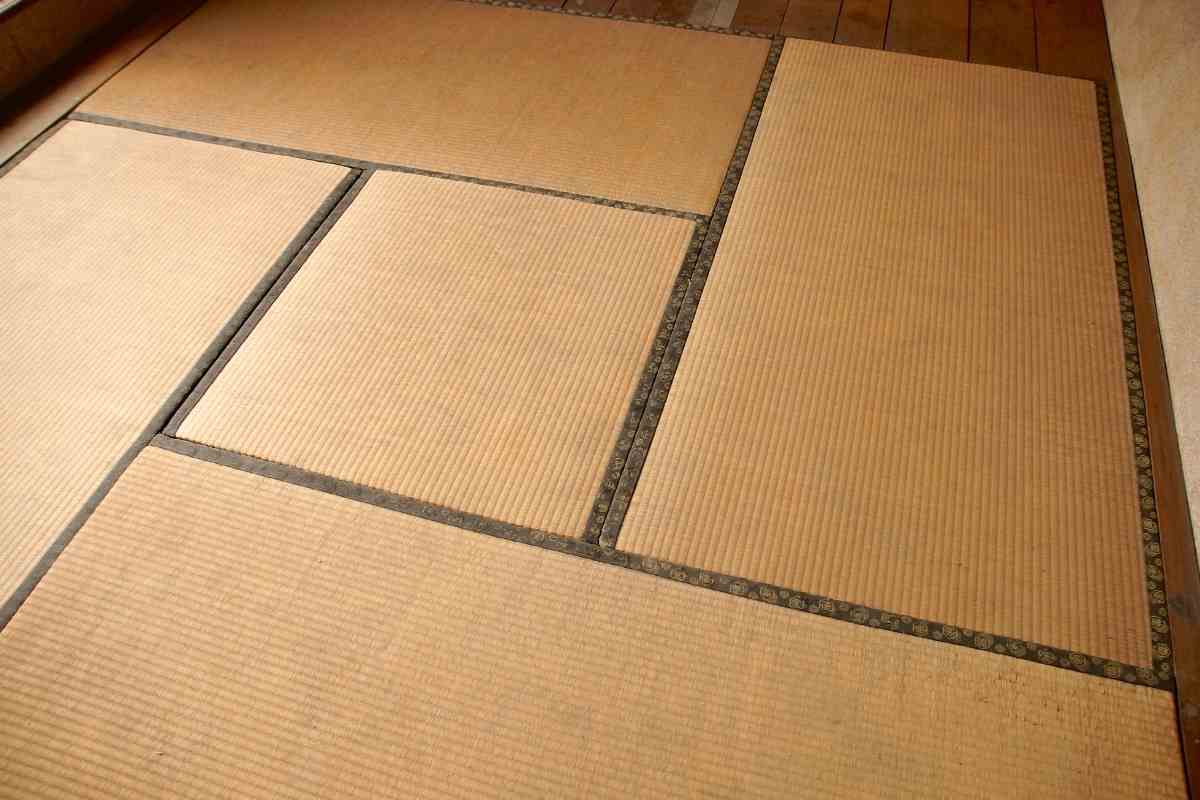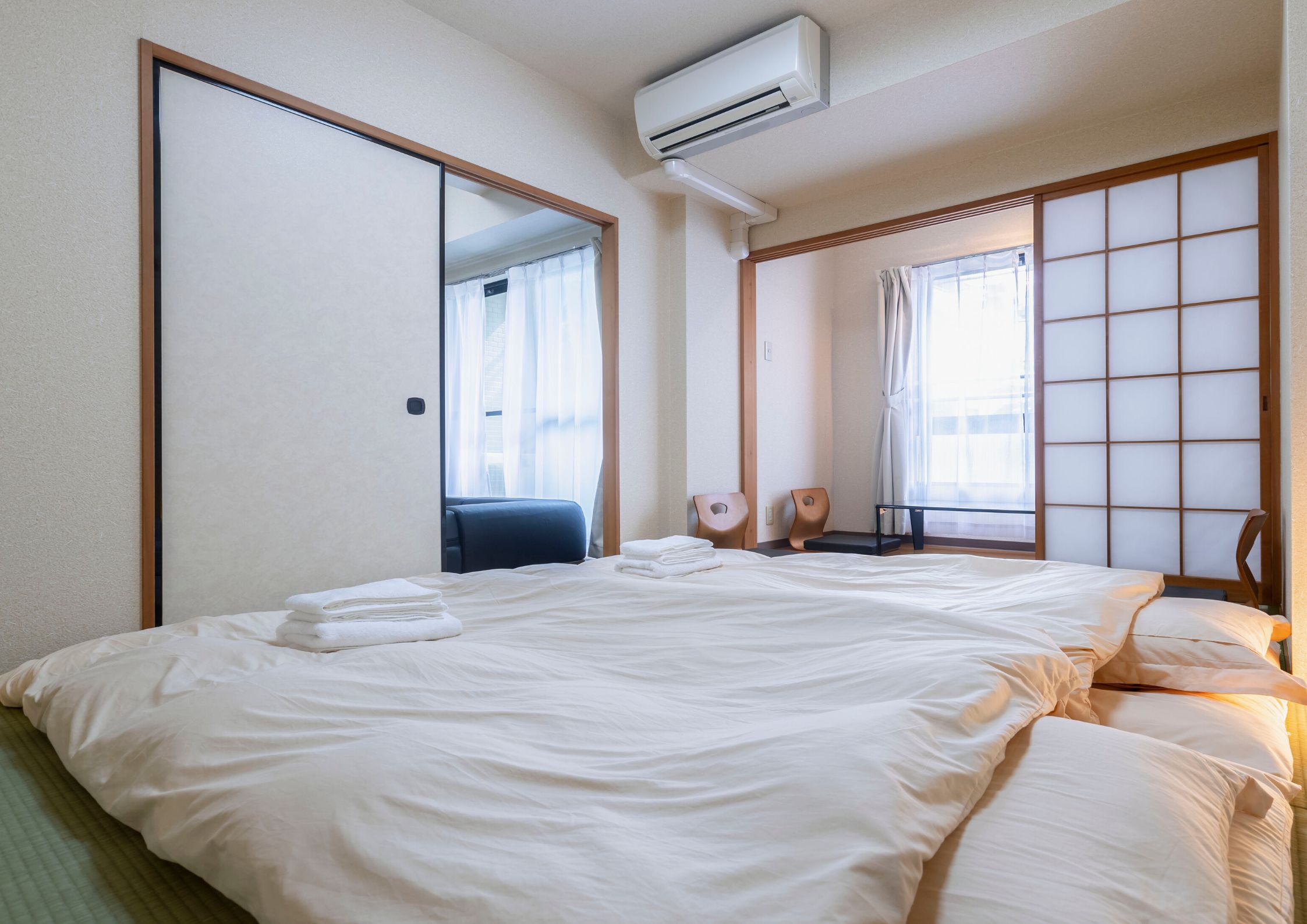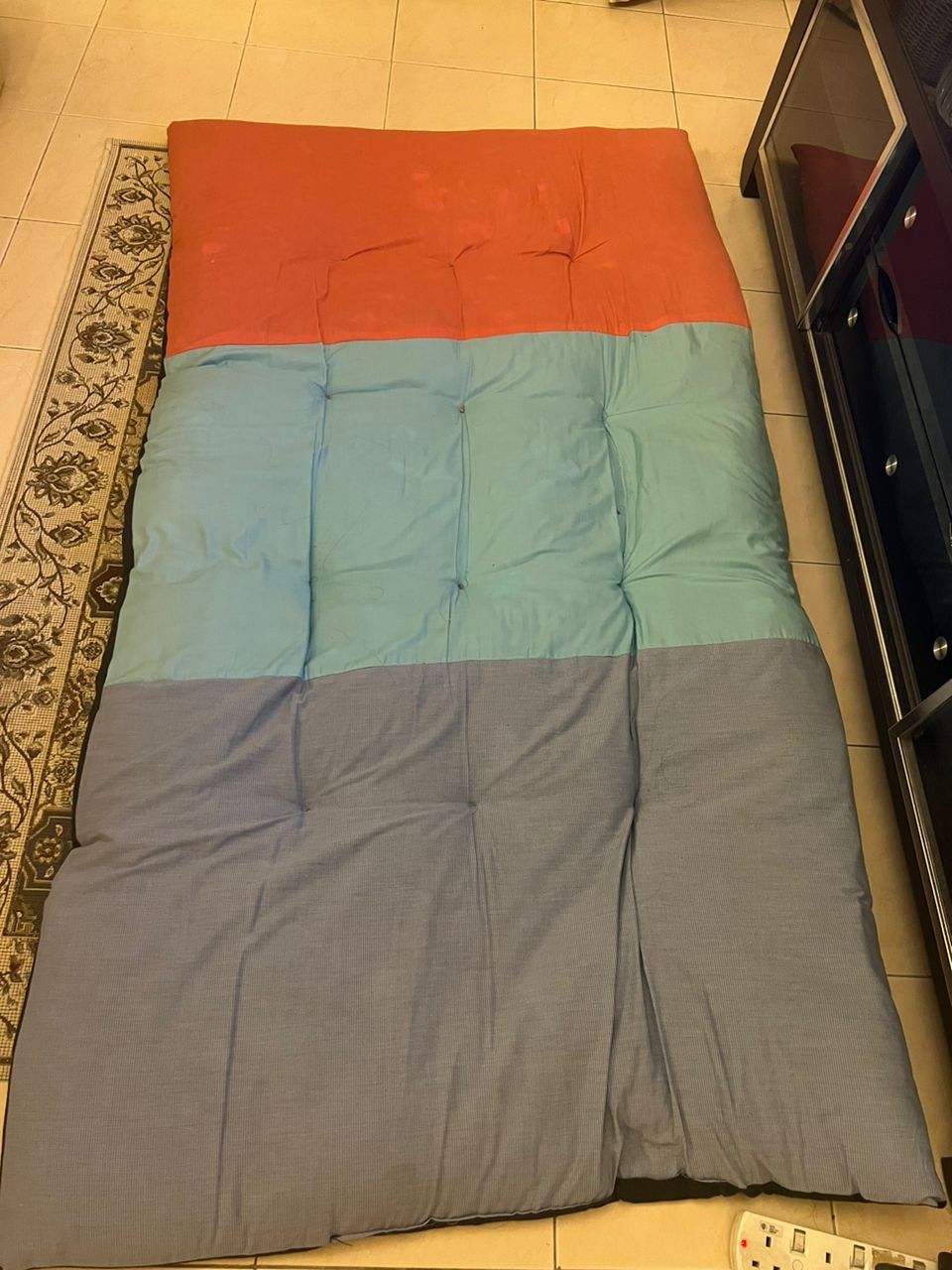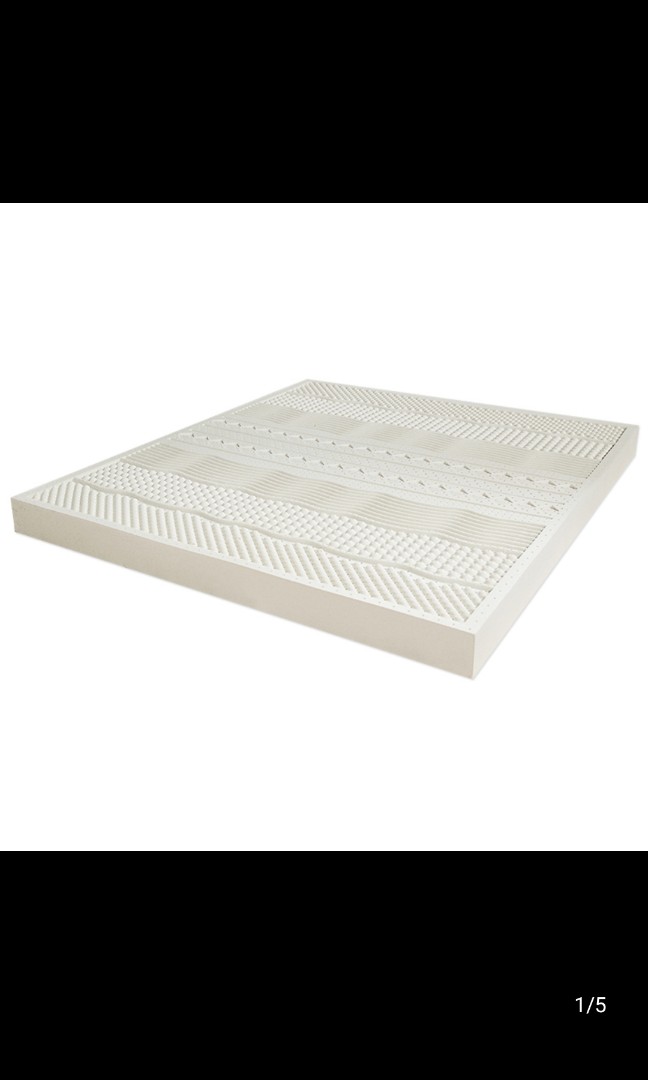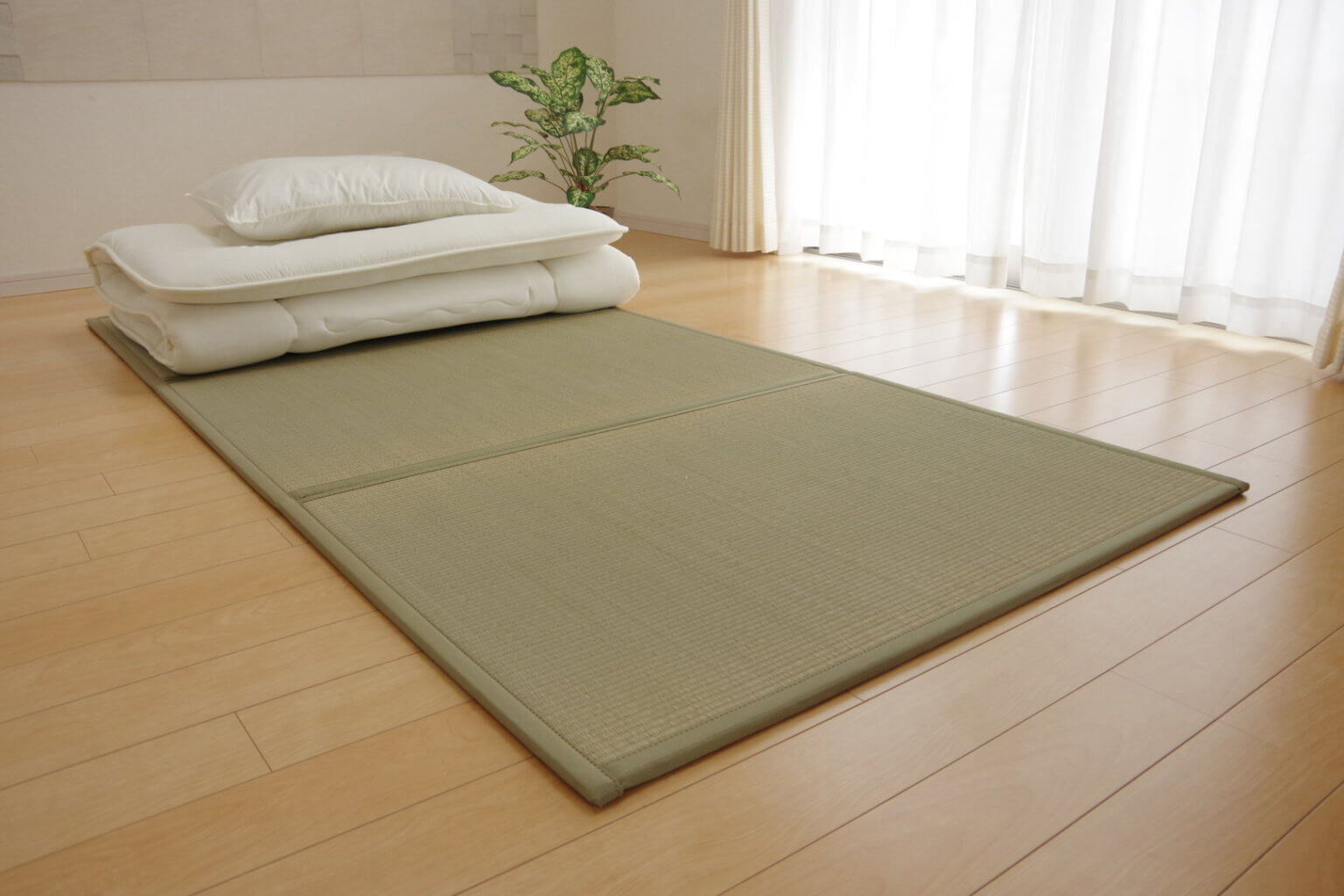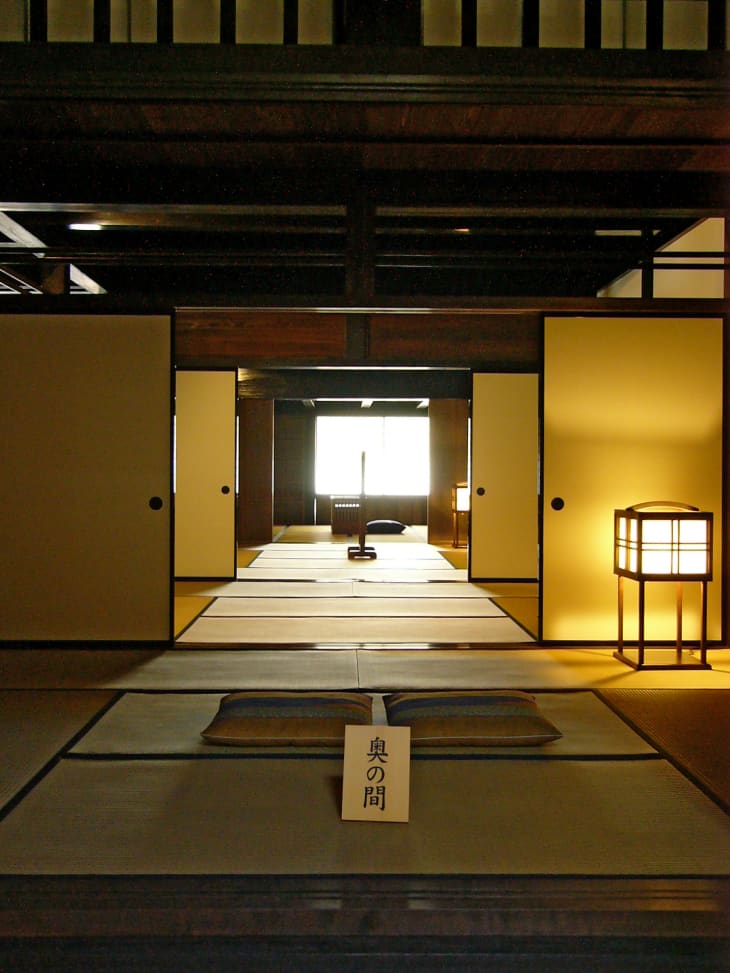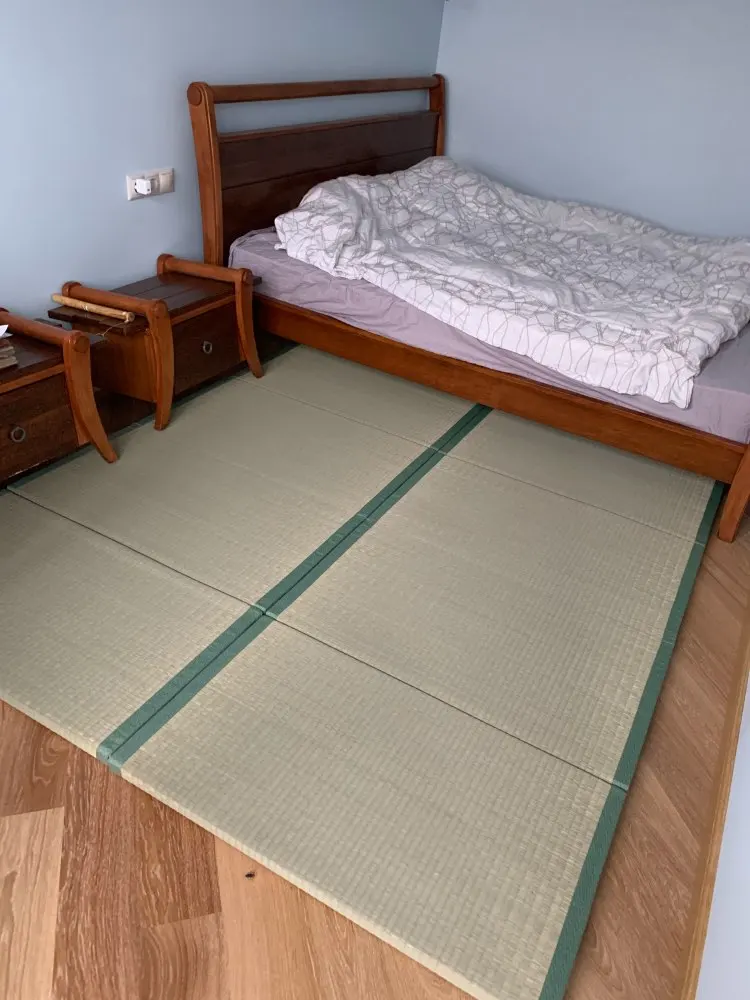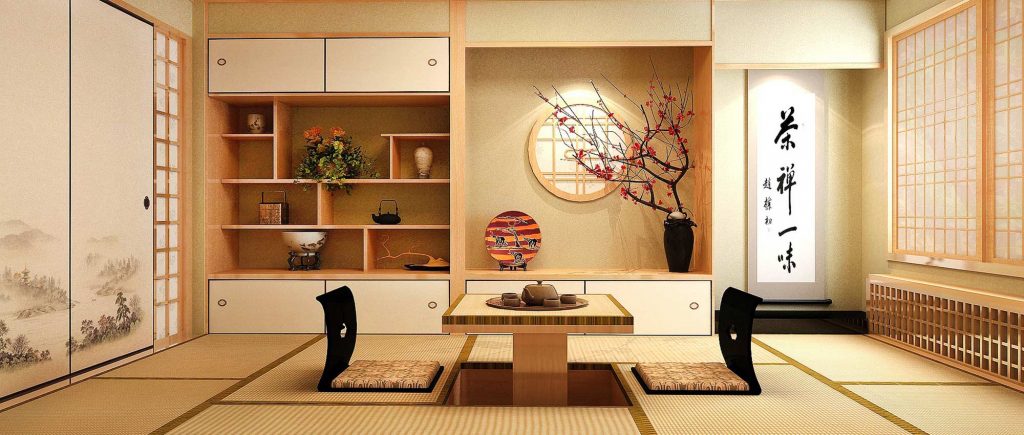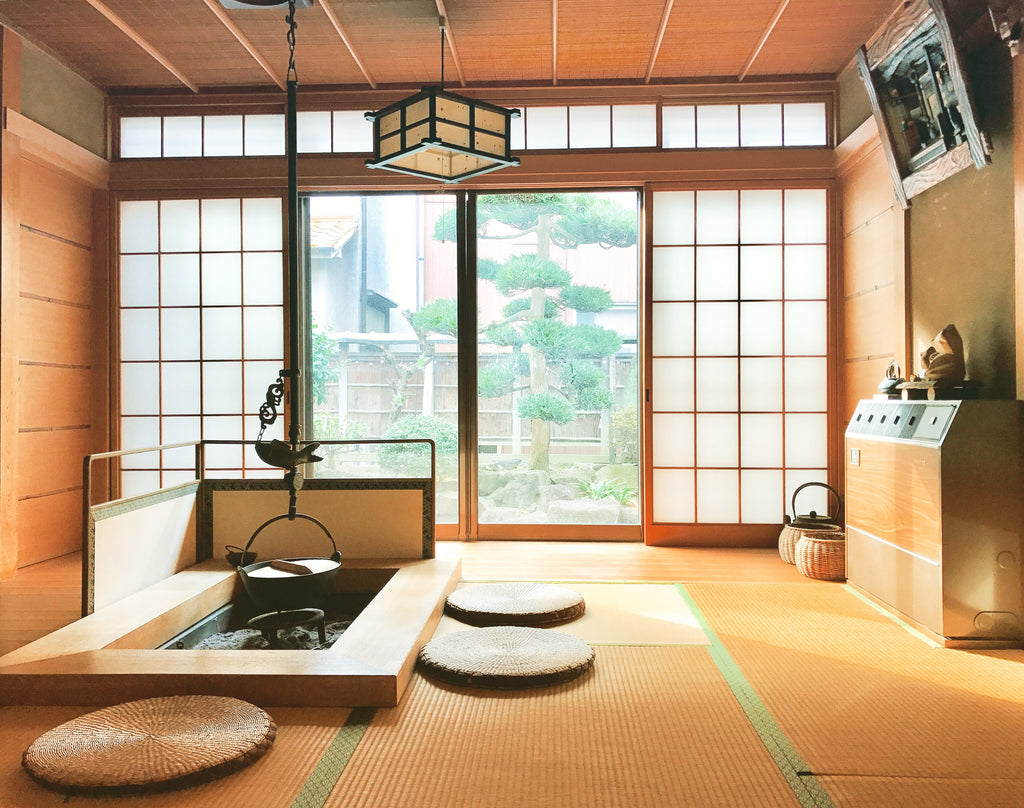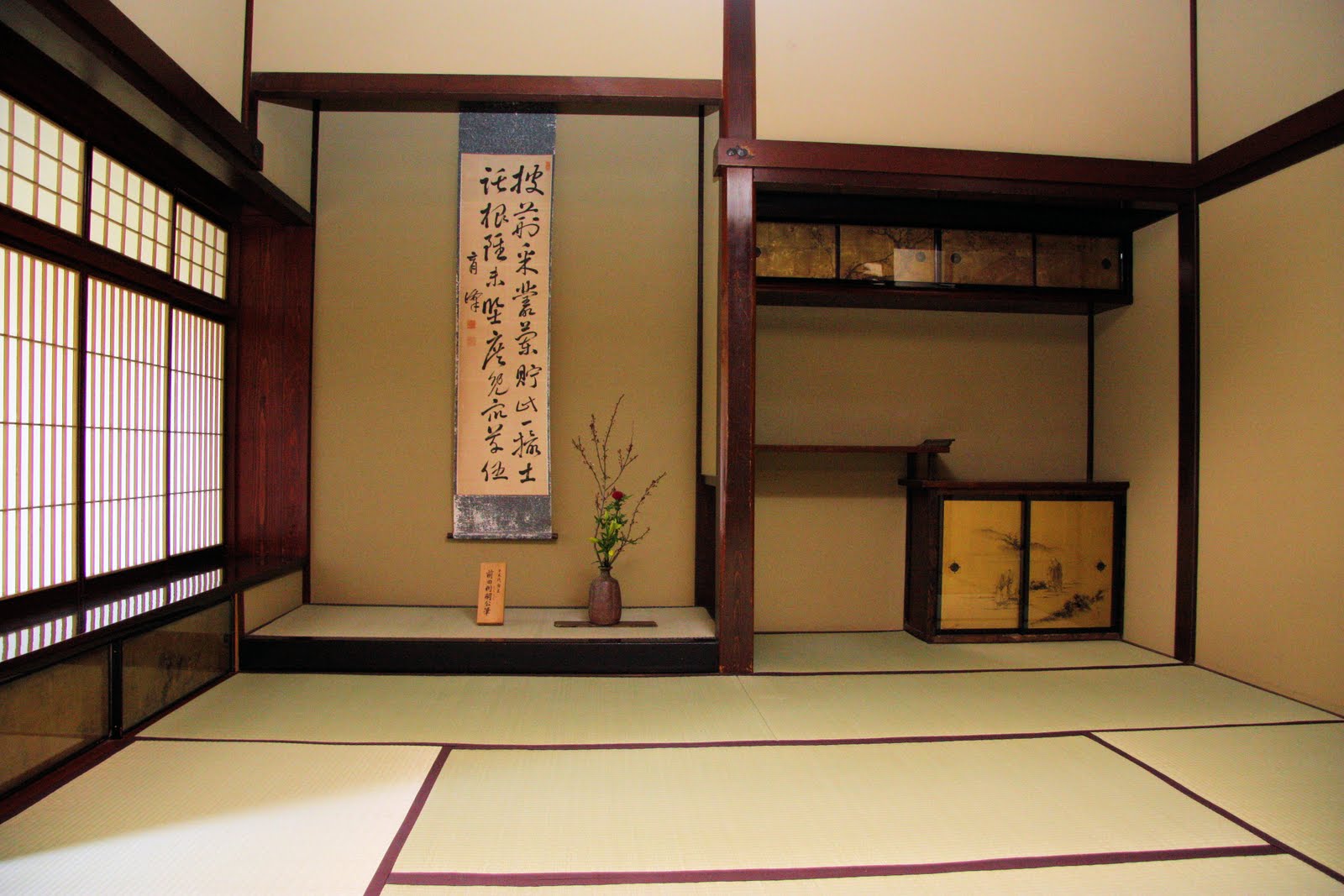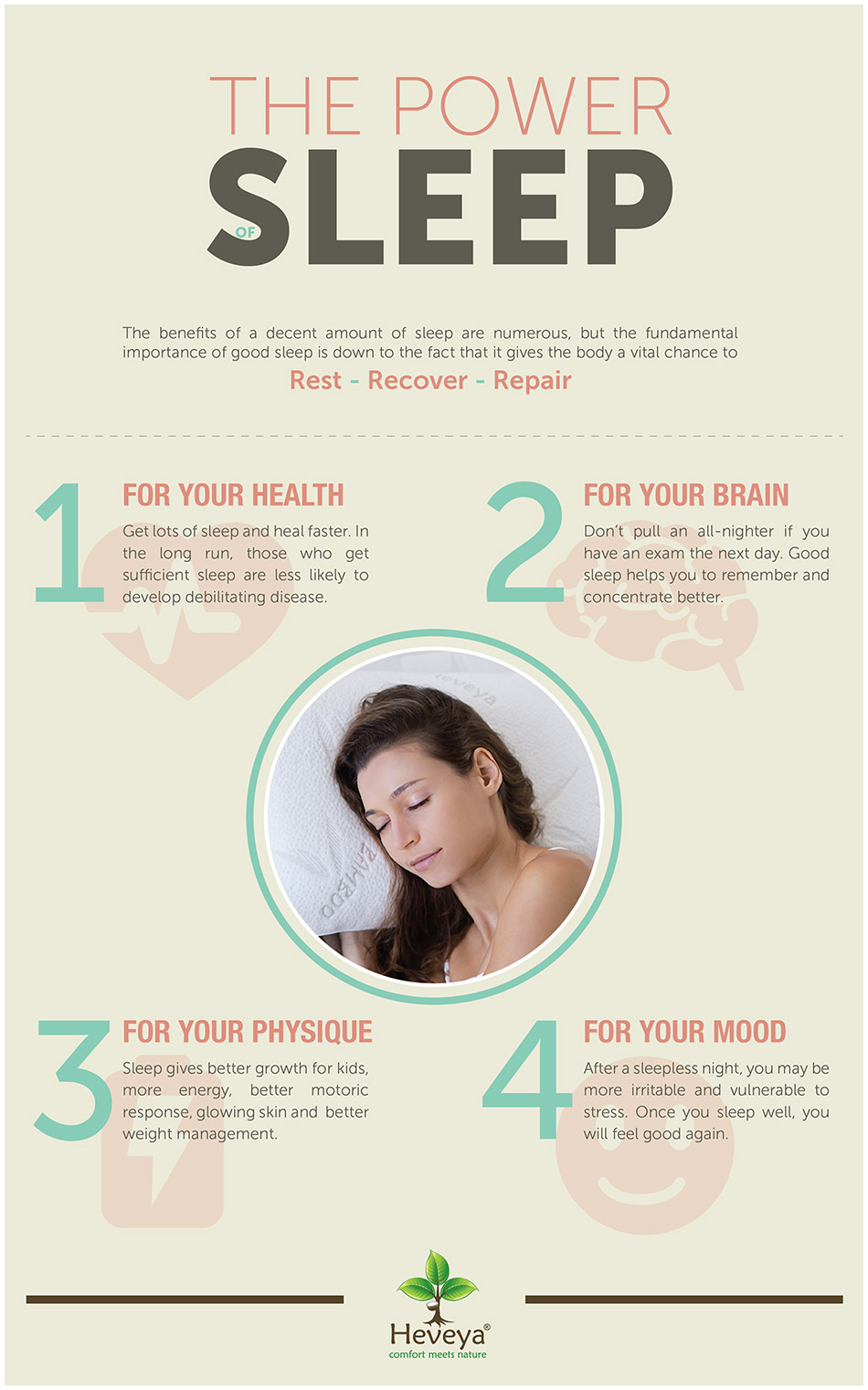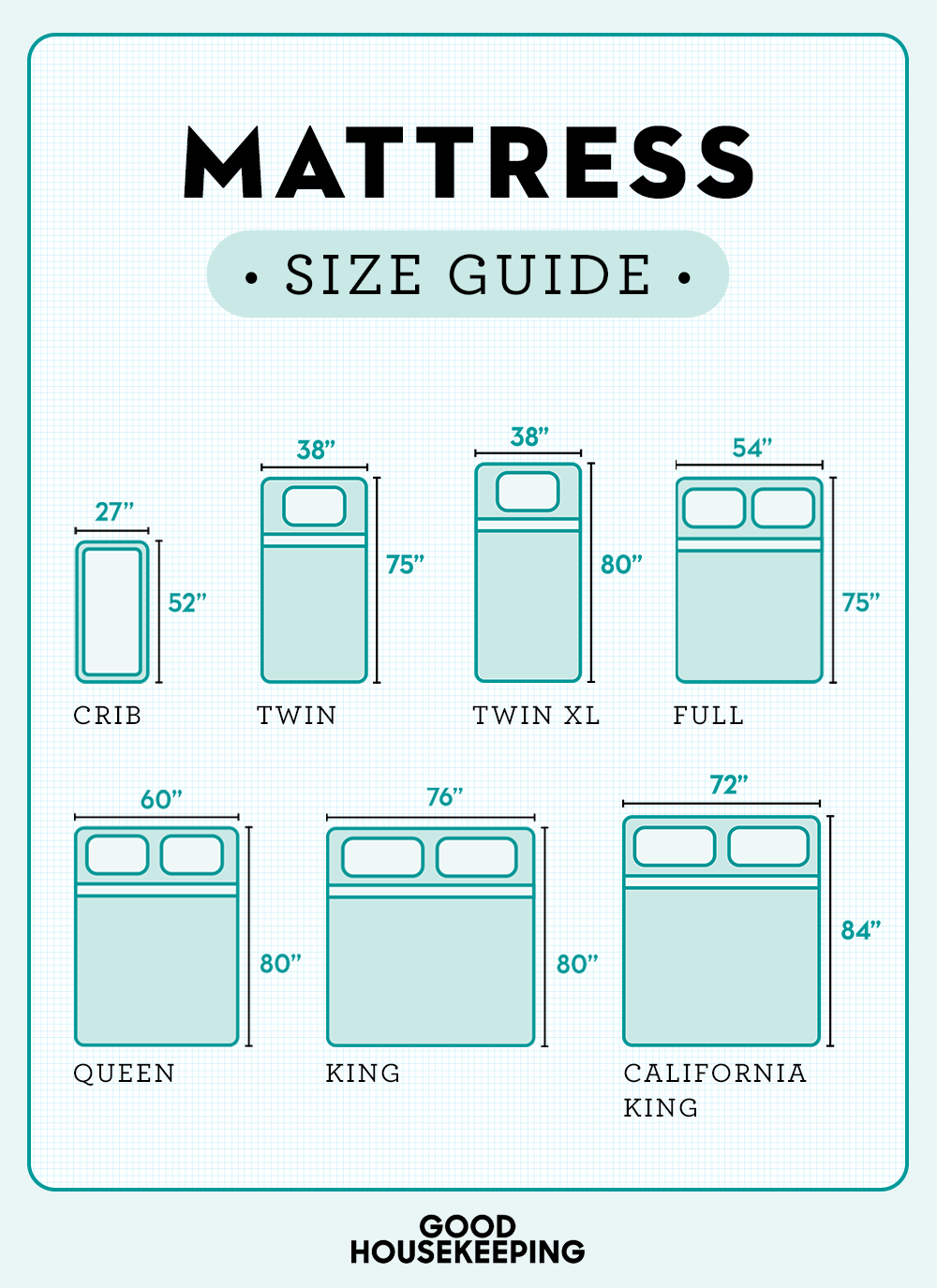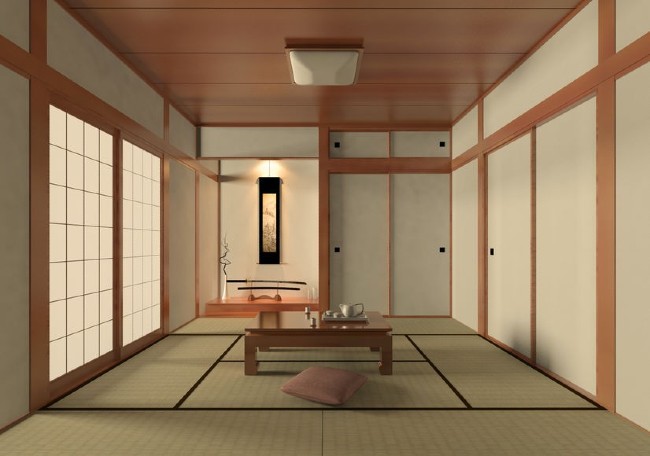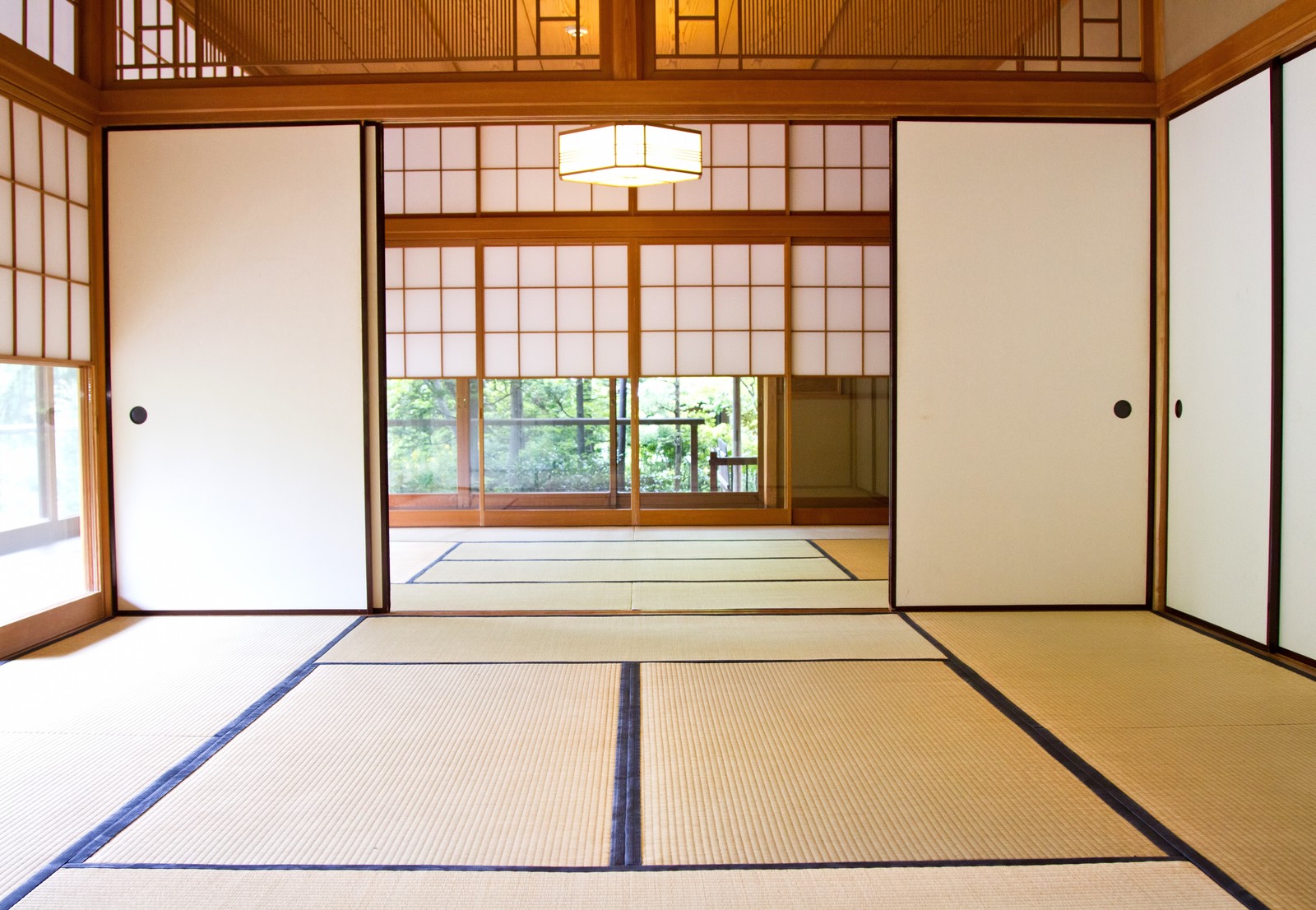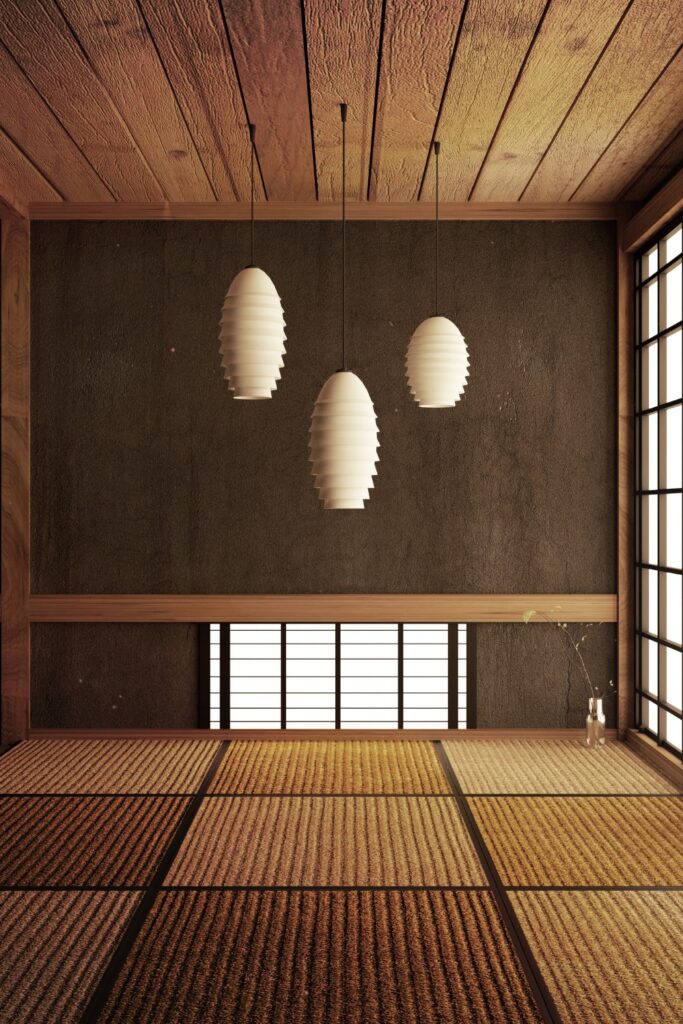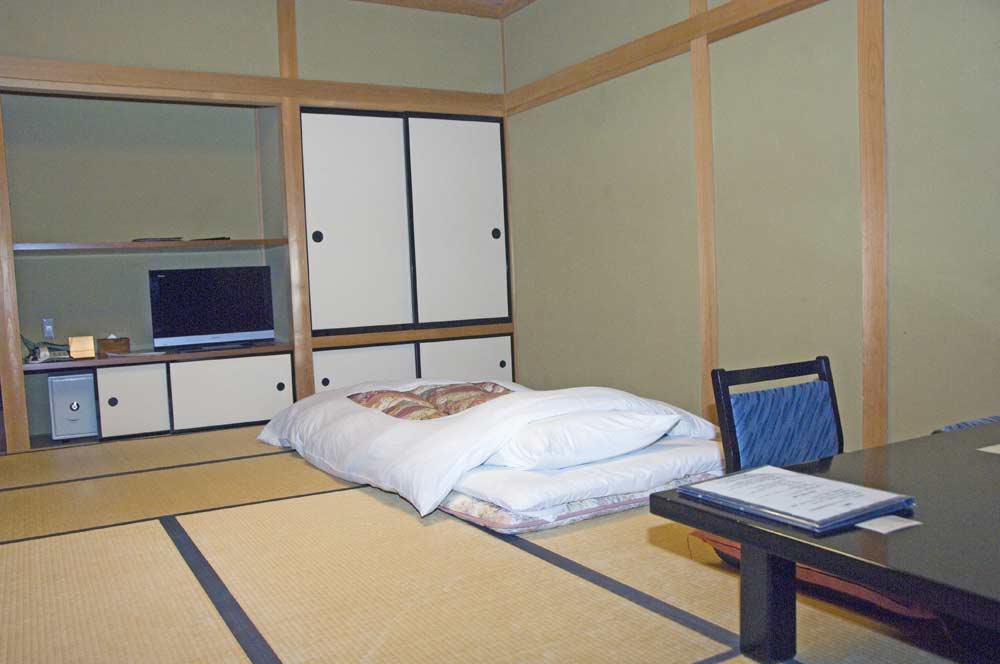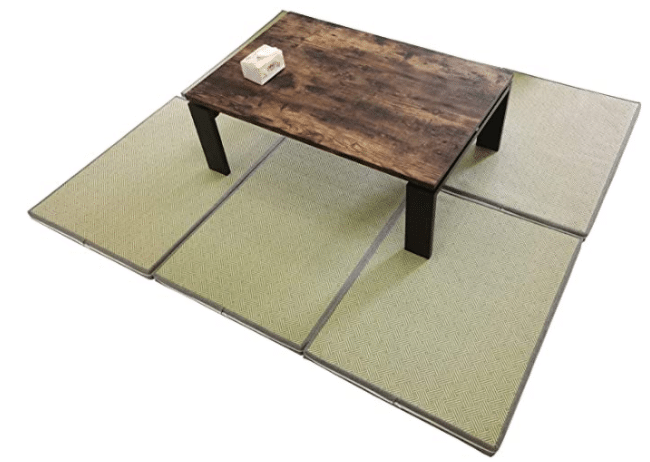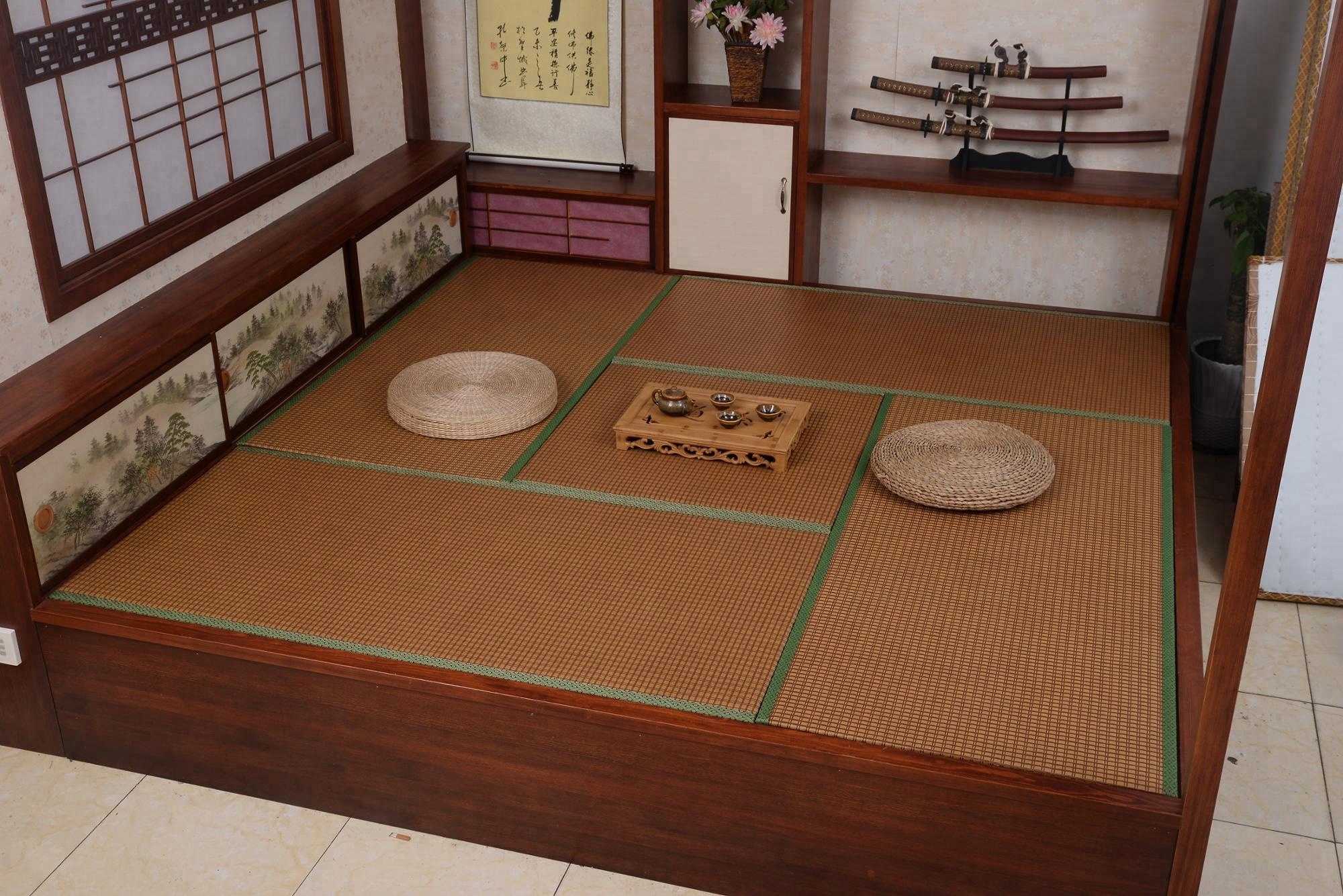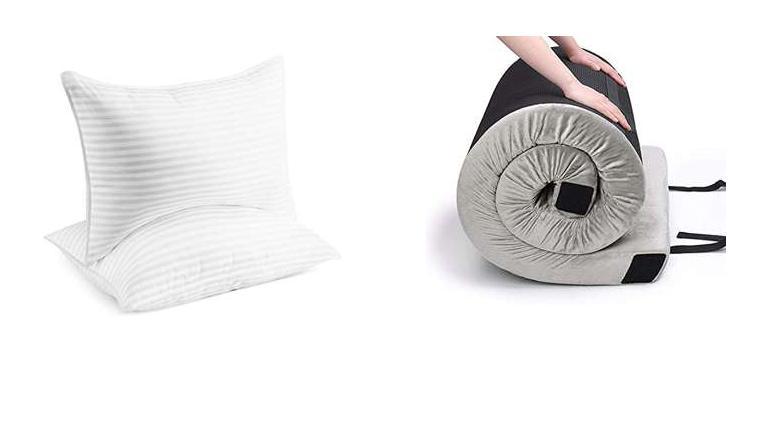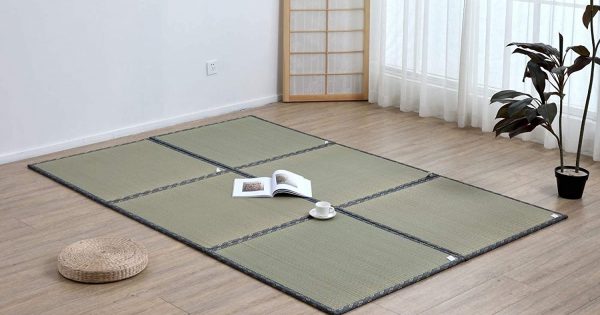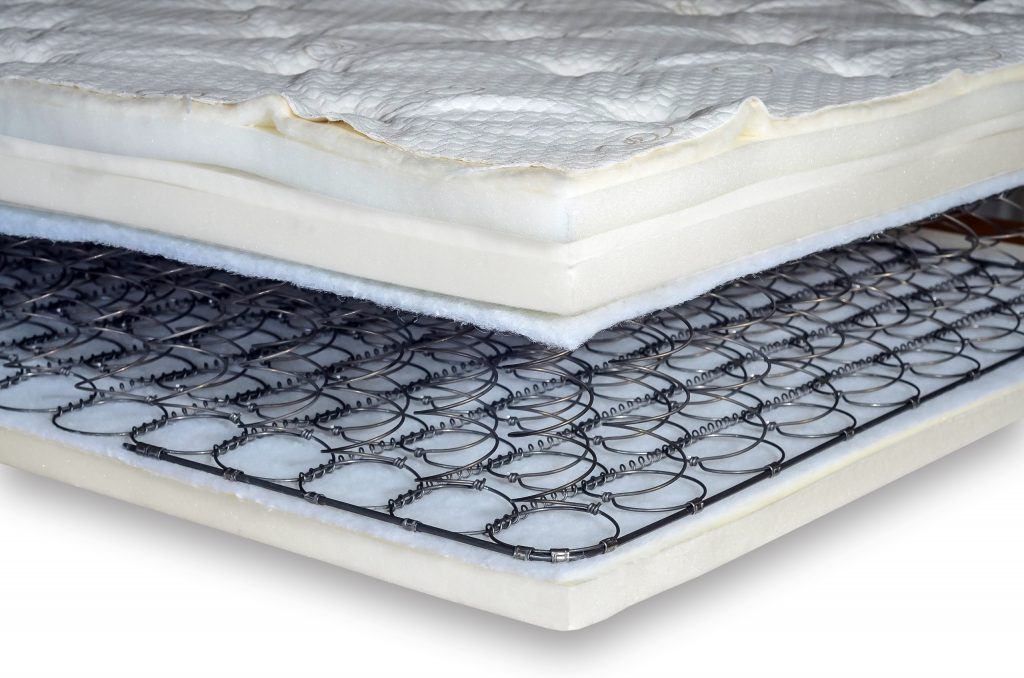Sleep is an essential part of our daily routine, and the quality of our sleep affects our overall health and well-being. Many factors can contribute to a good night's rest, and one of them is the type of mattress we sleep on. In recent years, there has been a growing trend towards traditional and natural sleeping surfaces, and tatami mattresses have become increasingly popular. Here are the top 10 benefits of sleeping on a tatami mattress. 1. Comfort - Tatami mattresses are made of natural materials such as rice straw, cotton, and rush grass, providing a firm yet comfortable sleeping surface. The unique design of tatami mats allows for even weight distribution, providing support for your body while you sleep. 2. Breathability - Unlike synthetic mattresses, tatami mats allow air to circulate, preventing heat and moisture from getting trapped. This helps regulate body temperature and promotes better sleep, especially during hotter months. 3. Allergen-free - Traditional tatami mattresses are made from natural materials, which are hypoallergenic and do not harbor dust mites or other allergens. This makes them an ideal choice for those with allergies or respiratory conditions. 4. Durability - Tatami mattresses are known for their durability and can last for many years with proper care. They are resistant to wear and tear, making them a worthwhile investment for your sleep and overall health. 5. Spine alignment - The firmness of tatami mattresses provides excellent support for your spine, promoting proper alignment and reducing pressure on your back and joints. This can help alleviate back pain and improve posture over time. 6. Eco-friendly - Tatami mattresses are made from natural and sustainable materials, making them an environmentally friendly option for your bedroom. They are also biodegradable, reducing their impact on the environment once they need to be replaced. 7. Versatility - Tatami mattresses can be used in various ways, making them a versatile addition to your home. They can be placed on top of a bed frame, directly on the floor, or even used as a yoga mat or meditation cushion. 8. Noise-free - Unlike traditional spring mattresses, tatami mattresses do not make any noise when you move around or change positions. This makes them an excellent choice for light sleepers or those who share a bed. 9. Affordable - While the initial cost of a tatami mattress may be higher than a standard mattress, they are a cost-effective option in the long run due to their durability. They also require minimal maintenance, saving you money on replacements and repairs. 10. Aesthetic appeal - Tatami mattresses add a touch of elegance and simplicity to any bedroom. They are a staple in Japanese homes and are often associated with a minimalist and natural aesthetic. They can also add a unique cultural touch to your bedroom decor.Benefits of Sleeping on a Tatami Mattress
Choosing the right tatami mattress for your sleep needs is essential to ensure maximum comfort and support. Here are some factors to consider when making your selection: 1. Size - Tatami mattresses come in various sizes, just like traditional western mattresses. Make sure to measure your bed frame or sleeping area to ensure a proper fit. 2. Material - Tatami mattresses can be made of different materials, such as rice straw, cotton, or rush grass. Consider which material you prefer and which one will provide the right level of comfort and support for your body. 3. Firmness - Tatami mattresses come in varying levels of firmness, so it's essential to choose one that suits your sleeping preferences. You may want to try different options before making a final decision. 4. Sleeping position - If you have a preferred sleeping position, consider a tatami mattress that provides the right support for that position. For example, side sleepers may need a slightly softer mattress, while back sleepers may prefer a firmer one. 5. Budget - Tatami mattresses can vary in price, so it's crucial to consider your budget when making a purchase. Remember that a higher price does not always mean better quality, so do some research and compare options before making a decision.How to Choose the Right Tatami Mattress for Sleeping
Tatami mats have been used for centuries in Japan for sleeping, sitting, and other traditional activities. The word "tatami" comes from the Japanese word "tatamu," which means "to fold" or "to pile." This is because tatami mats were originally made by piling layers of rice straw and then folding them into a rectangular shape. During the Heian period (794-1185), tatami mats were reserved for the nobility and were considered a status symbol. During the Edo period (1603-1868), they became more widespread and were used in homes of all social classes. Today, tatami mats are an essential part of Japanese culture and are still used in traditional homes, temples, and other cultural spaces.The History and Tradition of Sleeping on Tatami Mats
Sleeping on a tatami mattress can provide many health benefits, including: 1. Improved posture - The firmness of tatami mattresses helps promote proper spine alignment, reducing strain on your neck, shoulders, and back. 2. Better sleep quality - The breathability of tatami mats and their ability to regulate body temperature can help you sleep more comfortably, leading to better sleep quality. 3. Allergy relief - The use of natural materials in tatami mattresses makes them a hypoallergenic option for those with allergies or respiratory conditions. 4. Pain relief - Tatami mattresses can help alleviate back, neck, and joint pain by providing support and pressure relief for your body while you sleep. 5. Relaxation - The firm yet comfortable surface of tatami mats can help promote relaxation and reduce stress levels, making it easier to fall asleep and stay asleep.Health Benefits of Sleeping on a Tatami Mattress
To ensure your tatami mattress lasts for many years, here are some tips for proper care: 1. Avoid direct sunlight - Tatami mats can fade and become brittle if exposed to direct sunlight. Keep them away from windows or use curtains or blinds to block out the sun's rays. 2. Rotate regularly - To prevent uneven wear and tear, rotate your tatami mattress every few months. This will help it maintain its shape and firmness. 3. Air out regularly - Tatami mats can absorb moisture, so it's essential to air them out regularly. You can do this by standing them on their edges outside on a dry, sunny day. 4. Avoid moisture - Keep your tatami mattress away from damp areas to prevent mold or mildew from forming. If it does get wet, make sure to dry it thoroughly before using it again. 5. Use a mattress cover - To protect your tatami mattress from spills, stains, and dirt, consider using a mattress cover. This will also make it easier to clean and maintain.How to Properly Care for Your Tatami Mattress
While both tatami and western mattresses serve the same purpose, there are some key differences between the two: 1. Material - Western mattresses are typically made of synthetic materials such as foam, while tatami mattresses are made of natural materials like rice straw and cotton. 2. Firmness - Western mattresses often have varying levels of firmness to choose from, while tatami mattresses are typically firm. 3. Design - Western mattresses are usually rectangular, while tatami mattresses have a unique design with woven rush grass and a border. 4. Support - The firmness and even weight distribution of tatami mattresses provide excellent support for the body, while western mattresses may not offer the same level of support. 5. Maintenance - Tatami mattresses require minimal maintenance, while western mattresses may need more frequent cleaning and replacement.The Difference Between Tatami Mattresses and Western Mattresses
To ensure a comfortable and restful night's sleep on your tatami mattress, here are some tips to keep in mind: 1. Use a pillow - Since tatami mattresses are firm, it's essential to use a pillow that provides enough support for your head and neck. 2. Adjust room temperature - To avoid feeling too hot or too cold, make sure to adjust the room temperature to your comfort level. This will also help regulate body temperature while you sleep. 3. Wear comfortable clothing - Choose lightweight and breathable sleepwear to prevent feeling too hot or restricted while sleeping on a tatami mattress. 4. Practice proper sleep hygiene - Follow good sleep habits, such as limiting screen time before bed, avoiding caffeine and heavy meals close to bedtime, and maintaining a consistent sleep schedule. 5. Listen to your body - Everyone's body is different, so pay attention to your body's needs and adjust accordingly. If you need additional support, consider using a thin foam mattress topper on top of your tatami mattress.Tips for a Comfortable Night's Sleep on a Tatami Mattress
Tatami mattresses have been a staple in Japanese homes for centuries, and their popularity shows no signs of slowing down. Here are some reasons why tatami mattresses are so popular in Japan: 1. Tradition - For many Japanese people, sleeping on a tatami mattress is a part of their culture and heritage. It's a tradition passed down from generation to generation. 2. Natural materials - Japan has a deep appreciation for natural materials, and tatami mattresses are made from sustainable and eco-friendly materials. 3. Space-saving - Tatami mattresses can be easily rolled up and stored away, making them an excellent choice for small living spaces, which are common in Japan. 4. Comfort - Many Japanese people find tatami mattresses to be extremely comfortable and conducive to a good night's sleep. This is partly due to their firmness and unique design. 5. Aesthetics - Tatami mattresses add a touch of simplicity and elegance to any room, creating a calm and peaceful atmosphere for sleeping.Why Tatami Mattresses are Popular in Japan
Tatami mattresses can add a unique and traditional touch to your bedroom decor. Here are some tips on how to incorporate them into your design: 1. Choose a neutral color scheme - Since tatami mattresses are typically a neutral color, it's best to choose a neutral color scheme for your bedroom to create a cohesive look. 2. Use natural materials - Incorporate other natural materials into your bedroom design, such as wood, bamboo, or cotton, to complement the natural look of the tatami mattress. 3. Add a futon - Traditional Japanese bedrooms often use a futon on top of a tatami mattress for added comfort. You can also use a futon as a seating area during the day. 4. Use floor cushions - Floor cushions can add extra seating and a cozy touch to your bedroom. They also complement the low-profile design of tatami mattresses. 5. Keep it simple - Tatami mattresses are often associated with a minimalist and clutter-free lifestyle, so try to keep your bedroom design simple and free of unnecessary items.How to Incorporate a Tatami Mattress into Your Bedroom Decor
While tatami mattresses are generally firm and provide good support for the body, some may be better suited for certain sleeping positions: 1. Back sleepers - Back sleepers may prefer a slightly firmer tatami mattress to support their spine and prevent sinking into the mattress. 2. Side sleepers - Side sleepers may benefit from a slightly softer tatami mattress to provide cushioning for their shoulders and hips. 3. Stomach sleepers - Stomach sleepers may prefer a firmer tatami mattress to prevent their spine from arching and causing back pain. 4. Combination sleepers - If you tend to change positions throughout the night, a medium-firm tatami mattress may provide the right balance of support and comfort for your body. 5. Those with chronic pain - If you suffer from chronic pain, you may benefit from a thicker tatami mattress or adding a thin foam topper for extra support and cushioning.The Best Tatami Mattresses for Different Sleeping Positions
Why Sleeping on Tatami Mattress is the Perfect Addition to Your House Design

Experience the Japanese Tradition in Your Home
 If you are looking for a unique and traditional touch to add to your house design,
tatami mattresses
are the perfect choice. Originating from Japan, these mattresses have been used for centuries as a comfortable and practical sleep surface. Made from natural materials such as rice straw, rush grass, and cotton,
tatami mattresses
offer a comfortable and eco-friendly alternative to traditional mattresses. Not only will they provide a cozy sleeping experience, but they also add a touch of cultural authenticity to your home.
If you are looking for a unique and traditional touch to add to your house design,
tatami mattresses
are the perfect choice. Originating from Japan, these mattresses have been used for centuries as a comfortable and practical sleep surface. Made from natural materials such as rice straw, rush grass, and cotton,
tatami mattresses
offer a comfortable and eco-friendly alternative to traditional mattresses. Not only will they provide a cozy sleeping experience, but they also add a touch of cultural authenticity to your home.
Create a Serene and Peaceful Sleeping Environment
 In today's fast-paced world, it can be challenging to find a moment of peace and relaxation. However,
tatami mattresses
can help create a serene and tranquil atmosphere in your bedroom. The natural materials used in making these mattresses have a calming effect on the mind and body, promoting a better night's sleep. The firmness of the
tatami
surface also helps align the spine and alleviate any back pain, making it the ideal choice for those who suffer from discomfort while sleeping.
In today's fast-paced world, it can be challenging to find a moment of peace and relaxation. However,
tatami mattresses
can help create a serene and tranquil atmosphere in your bedroom. The natural materials used in making these mattresses have a calming effect on the mind and body, promoting a better night's sleep. The firmness of the
tatami
surface also helps align the spine and alleviate any back pain, making it the ideal choice for those who suffer from discomfort while sleeping.
Maximize Your Space with a Versatile Sleeping Solution
 One of the significant benefits of
tatami mattresses
is their versatility. These mattresses can be easily rolled up and stored away during the day, freeing up space in your room for other activities. This makes them an excellent choice for smaller living spaces, where maximizing space is essential. Additionally,
tatami mattresses
can be used as a seating area during the day, making them a practical and multi-functional addition to your house design.
One of the significant benefits of
tatami mattresses
is their versatility. These mattresses can be easily rolled up and stored away during the day, freeing up space in your room for other activities. This makes them an excellent choice for smaller living spaces, where maximizing space is essential. Additionally,
tatami mattresses
can be used as a seating area during the day, making them a practical and multi-functional addition to your house design.
Experience the Health Benefits of Sleeping on Tatami
 Apart from offering a comfortable and peaceful sleeping experience,
tatami mattresses
also provide several health benefits. The use of natural materials in these mattresses makes them hypoallergenic, making them a safe choice for those with allergies or respiratory problems. The
tatami
surface is also known to improve blood circulation and relieve muscle tension, promoting a healthier and rejuvenating sleep.
Apart from offering a comfortable and peaceful sleeping experience,
tatami mattresses
also provide several health benefits. The use of natural materials in these mattresses makes them hypoallergenic, making them a safe choice for those with allergies or respiratory problems. The
tatami
surface is also known to improve blood circulation and relieve muscle tension, promoting a healthier and rejuvenating sleep.
Conclusion
 Incorporating
tatami mattresses
into your house design not only adds a unique and traditional touch but also offers a range of practical benefits. From creating a serene sleeping environment to promoting better health,
tatami mattresses
are a versatile and eco-friendly choice for your home. So why not embrace the Japanese tradition and experience the comfort and serenity of
tatami
in your own home?
Incorporating
tatami mattresses
into your house design not only adds a unique and traditional touch but also offers a range of practical benefits. From creating a serene sleeping environment to promoting better health,
tatami mattresses
are a versatile and eco-friendly choice for your home. So why not embrace the Japanese tradition and experience the comfort and serenity of
tatami
in your own home?



